Unit 5: Using Decimals in Real Life
Topic A: Unit Pricing
This next topic will help you practice some math skills you have already learned:
- Dividing rounding
- Working with money
- Comparing numbers
Have you ever stood in front of a grocery store shelf holding two different sizes of the same product in your hands trying to decide on the “best buy”? The different sized packages make it difficult to compare the prices. Many stores now help by putting the unit prices on the shelf below their products, but sometimes you need to figure the unit price out yourself.
The unit price is the price for one measure or one unit of a product.
- The unit price for a 10 kilogram (kg) bag of sugar will be the price per one kilogram (price/kg).
- You may wish to compare the cost of pop sold in 750 millilitre (mL) bottles, 500 mL cans and 2 litre bottles. For these items, the unit price will be price per one millilitre (price/mL).
- Socks are often sold in bundles of several pairs. How do you decide on the best buy if the same socks are on sale in bundles of 6 pairs, bundles of 8 pairs and bundles of 12 pairs? You figure out the unit price which would be the price per one pair of socks (price/pair).
To calculate the unit price, do this:
total price ÷ number of units = unit Price
To compare unit prices, you need to compare the same unit to the same unit.
Compare kilograms to kilograms
Compare litres to litres
Compare pairs of slippers to pairs of slippers
Compare grams to grams
…and so on!
Example A
A 210 gram bag of potato chips costs $4.20 while an 110 g bag sells for $3.30 Which is the better buy? We will compare the price per gram for the two bags.
- Step 1 – Be sure that the prices are written the same way; that is, all using the $ (dollars) style or all using the ¢ (cents) style. Be sure that the units for all items are the same.
- Step 2 – Work out the unit price for each size bag by dividing the total price by the contents (the number of grams). Be careful to include the money sign and units.
- $4.20 ÷ 210g = $0.02/g. The 210g bag costs 2 cents per gram.
- $3.30 ÷ 110g = $0.03/g. The 150g bag costs 3 cents per gram.
- Step 3 – Compare the unit price to decide which size bag is the better value. The 210 g bag is the better buy.
Of course the item with the best unit price may not be the best buy for you. You may only have enough money to buy a small quantity, or you may not want to have a large quantity of something. This is a helpful skill to know for if you need to use it.
Exercise 1
Calculate the unit price of these items which are of equal quality and then put a checkmark beside the better buy. (Divide the price by number of units.)
| Item | Unit to Compare | Total Price | Number of Units | Unit Price | [latex]\checkmark[/latex] |
|---|---|---|---|---|---|
| Socks – 4 pair $2.80 | pairs | $2.80 | 4 | $0.70/pr | |
| Socks – 6 pairs $4.08 | pairs | $4.08 | 6 | $0.68/pr | [latex]\checkmark[/latex] |
| Item | Unit to Compare | Total Price | Number of Units | Unit Price | [latex]\checkmark[/latex] |
|---|---|---|---|---|---|
| Toilet paper – 6 rolls $1.86 | |||||
| Toilet paper – 8 rolls $2.56 |
| Item | Unit to Compare | Total Price | Number of Units | Unit Price | [latex]\checkmark[/latex] |
|---|---|---|---|---|---|
| Laundry Soap – 3 Litres $5.94 | |||||
| Laundry Soap – 5 Litres $9.80 |
| Item | Unit to Compare | Total Price | Number of Units | Unit Price | [latex]\checkmark[/latex] |
|---|---|---|---|---|---|
| A dozen eggs $2.79 | |||||
| A dozen and a half eggs $4.09 |
Answers to Exercise 1
| Item | Unit to Compare | Total Price | Number of Units | Unit Price | [latex]\checkmark[/latex] |
|---|---|---|---|---|---|
| Toilet paper – 6 rolls $1.86 | rolls | $1.86 | 6 | $0.31/roll | [latex]\checkmark[/latex] |
| Toilet paper – 8 rolls $2.56 | rolls | $2.56 | 8 | $0.32/roll | |
| Laundry Soap – 3 Litres $5.94 | litres | $5.94 | 3 | $1.98/L | |
| Laundry Soap – 5 Litres $9.80 | litres | $9.80 | 5 | $1.96/L | [latex]\checkmark[/latex] |
| A dozen eggs $2.79 | eggs | $2.79 | 12 | $0.2325/egg | |
| A dozen and a half eggs $4.09 | eggs | $4.09 | 18 | $0.227/egg | [latex]\checkmark[/latex] |
Now look at this example:
Examples
Shoppers Drug Mart is advertising one brand of toothpaste at $1.39 per 100 mL tube and another brand at 99¢ per 75 mL tube. Which is the better buy?
Step 1 – Check that the units are the same.
- Both toothpastes are measured in mililitres, so we will be comparing millilitres to millilitres.
- The price for one is written in dollars, and the other is in cents. Rewrite 99¢ as $0.99 so that we will compare dollars to dollars.
Step 2 – Work out the unit price for each tube by dividing total price by the contents (number of mL).
- $1.39 ÷ 100 mL = $0.0139/mL
- $0.99 ÷ 75 m = $0.0132/mL
Step 3 – Decide which tube is cheaper per unit price.
- Even though the results look strange for money, you are still able to tell that $0.0132/mL is less than $0.0139/ml. The 75 mL tube is the better buy.
Remember:
| Unit | Abbreviations |
|---|---|
| kilogram | kg |
| gram | g |
| litre | L |
| millilitre | mL |
| package | pkg |
1 kilogram = 1000 grams
1 litre = 1000 millitres
This might be a good time to review Dollars and Cents and Rounding.
Exercise 2
Round to the nearest cent.
- $2.438
- 84.8¢
- 0.9¢
- $0.051
- 10.9¢
- $12.479
Answers to Exercise 2
- $2.44
- 85¢
- 1¢
- $0.05
- 11¢
- $12.48
Exercise 3
Decide which item in each group is the “best buy” by figuring out the unit price. Round the unit price to the nearest cent and put a checkmark next to the best buy.
| Amount | Price | Unit price | Best buy |
|---|---|---|---|
| 200 g | $4.99 | $0.024/g ≈ $0.02/g | |
| 1 kg (1000 g) | $11.99 | $0.011/g ≈ $0.01/g | [latex]\checkmark[/latex] |
$4.99 ÷ 200 = $0.02495/g ≈ $0.02/g
$11.99 ÷1000 g = $0.0011/g ≈$0.01/g
| Amount | Price | Unit Price | Best buy |
|---|---|---|---|
| 5 kg | $9.99 | ||
| 8 kg | $16.99 |
| Amount | Price | Unit Price | Best buy |
|---|---|---|---|
| 170 g | $4.49 | ||
| 300 g | $3.98 |
| Amount | Price | Unit Price | Best buy |
|---|---|---|---|
| 20 bags | $2.29 | ||
| 45 bags | $3.89 |
| Amount | Price | Unit Price | Best buy |
|---|---|---|---|
| 1.4 kg | $3.69 | ||
| 2 kg | $5.39 |
| Amount | Price | Unit Price | Best buy |
|---|---|---|---|
| 2 pairs | 99¢ | ||
| 5 pairs | $2.58 |
Answers to Exercise 3
| Amount | Price | Unit Price | Best buy |
|---|---|---|---|
| 5 kg | $9.99 | $2.00/kg | [latex]\checkmark[/latex] |
| 8 kg | $16.99 | $2.12/kg |
| Amount | Price | Unit Price | Best buy |
|---|---|---|---|
| 170 g | $4.49 | $0.03/g | |
| 300 g | $3.98 | $0.01/g | [latex]\checkmark[/latex] |
| Amount | Price | Unit Price | Best buy |
|---|---|---|---|
| 20 bags | $2.29 | $0.11/bag | |
| 45 bags | $3.89 | $0.09/bag | [latex]\checkmark[/latex] |
| Amount | Price | Unit Price | Best buy |
|---|---|---|---|
| 1.4 kg | $3.69 | $2.64/kg | [latex]\checkmark[/latex] |
| 2 kg | $5.39 | $2.70/kg |
| Amount | Price | Unit Price | Best buy |
|---|---|---|---|
| 2 pairs | 99¢ | $0.50/pr | [latex]\checkmark[/latex] |
| 5 pairs | $2.58 | $0.52/pr |
Rounding to the Nearest Tenth of a Cent
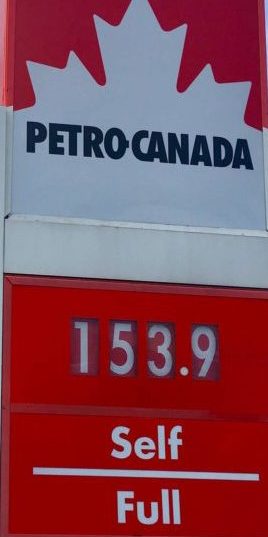 We do not have a coin that equals one tenth of one cent ($0.001), but this amount of money is often used to calculate prices and can be significant for large amounts.
We do not have a coin that equals one tenth of one cent ($0.001), but this amount of money is often used to calculate prices and can be significant for large amounts.
The unit price information on store shelves also may include tenths of a cent.
One other place where you see tenths of a cent is at the gas station.
Gasoline is priced at cents per litre and is usually written like this, without the $ or ¢:
156.9 L (156.9¢/L) or 0.999 L ($0.999/L)
Gas Pricing in the Past, Present, and Future
Gas prices have risen and fallen thousands of times over the years.
On the gas station signs, the cost is listed as cents per litre (¢/L).
Before 2010, it was unthinkable that gas would ever go over a dollar per litre. However, in the next ten years it came close to two dollars per litre in some parts of Canada.
Here are a few pump prices from the past for comparison:
| Year | Average cost of gas in BC in ¢/L |
|---|---|
| 1980 | 23.6 |
| 1990 | 58.5 |
| 2000 | 69.4 |
| 2010 | 114.3 |
| 2015 | 123.5 |
| 2019 | 149.1 |
| April 2020 in some parts of BC | 63.9 |
As you can see, gas prices rose steadily over the decades. In 2019, gas was as high as 169 cents per litre.
In early 2020, the COVID-19 pandemic led to a crash of the oil market, leading to extraordinarily low gas prices. By mid-April, gas in some parts of BC had dropped to below 65 cents per litre, which was the lowest it had been in over 20 years.
Exercise 4
- What are gas prices this week in your town?
- What was the lowest price seen during the COVID-19 crash of 2020?
- What is your opinion? How do you think gas prices will be listed in the future? Is it more likely that we will continue to use cents per litre? Or will we transition to dollars per litre?
Answers to Exercise 4
Answers will vary. Show your work to your instructor
Topic A: Self-Test
Goal: Good Shopping!
Think about your grocery needs for this week while you do this activity.
- Option 1: Sit down with this week’s grocery sale fliers and comparison shop. Work out the unit price for at least 4 items that are advertised by more than one store. Decide on the “best buy.” Fill in the chart below with your information.
- Option 2: You may prefer to go to a store and copy down the prices and sizes of different brands of an item that you use. Decide which size in what brand is the best buy. Do this for 4 products. Fill in the chart below with your information.
| Item | Amount | Price | Unit price | Best buy |
|---|---|---|---|---|
| Safeway Compliments dry spaghetti | 900 g | $2.43 | $0.0027 | |
| Extra Foods Western Family dry spaghetti | 500 g | $1.29 | $0.0025 | [latex]\checkmark[/latex] |
Design Your Own House Project Part 3: Flooring
Mark: /20
Use the graph paper house sketch that you made in the Design Your Own House Project Part 1 in Unit 2 – Topic B: Subtracting Decimals to do this activity. Clearly label and organize/show your work!
- What is the area of each room in the house? (area = length × width) /5
- Bedroom 1:
- Bedroom 2:
- Bathroom:
- Kitchen:
- Living room:
- Here are some choices for flooring. Calculate the cost per metre squared for each of them. /6
Picture Flooring material Covers Price Cost per metre squared 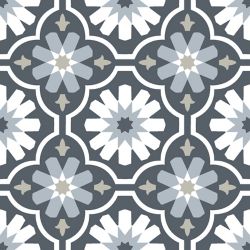
Box of 20 peel and stick floor tiles 6.2 m² 47.99 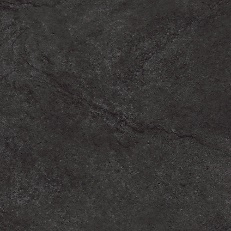
Vinyl floor tiles 7.3 m² 94.80 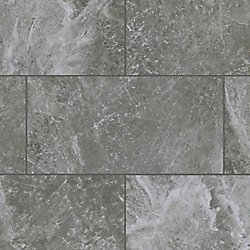
Vinyl plank flooring 6.1 m² 72.86 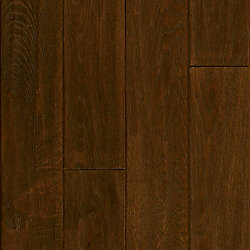
Hardwood flooring 7.2 m² 148.61 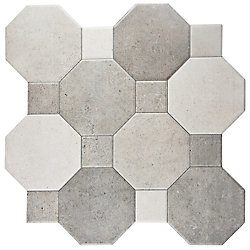
Ceramic tile 6.9 m² 202.05 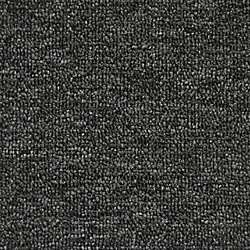
Carpet 1 m² 8.89 - Select a flooring material for each of your five rooms, and using your answer to question a, calculate what the flooring would cost for each room. /9
- Bedroom 1 Flooring Material:
Calculate cost: - Bedroom 2 Flooring Material:
Calculate cost: - Bathroom Flooring Material:
Calculate cost: - Kitchen Flooring Material:
Calculate cost: - Living Room Flooring Material:
Calculate cost:
- Bedroom 1 Flooring Material:
- What is the total cost of flooring for the whole house?
- What is the average cost of flooring per room of the house?
- Which of the flooring choices is the best buy from a cost perspective?
- Do you think that flooring really is the best buy? Why or why not?
When you have finished this project, put your graph paper somewhere safe, because you will be using it again at the end of Unit 5 Topic B.
Marking Checklist for House Project Part 3
Calculations:
- The area of each room has been calculated correctly.
- The cost per metre squared of each flooring material has been calculated correctly.
- The cost of flooring for each room has been calculated correctly.
- The total cost of flooring for the whole house has been calculated correctly.
- The average cost of flooring per room has been calculated correctly.
- The best buy has been correctly identified.
The price for a set amount. E.g., price per litre, price per gram.
Any fixed quantity, amount, distance or measure that is used as a standard. In mathematics, always identify the unit with which you are working. E.g., 3 km, 4 cups, 12 people, $76, 70 books, 545 g.

